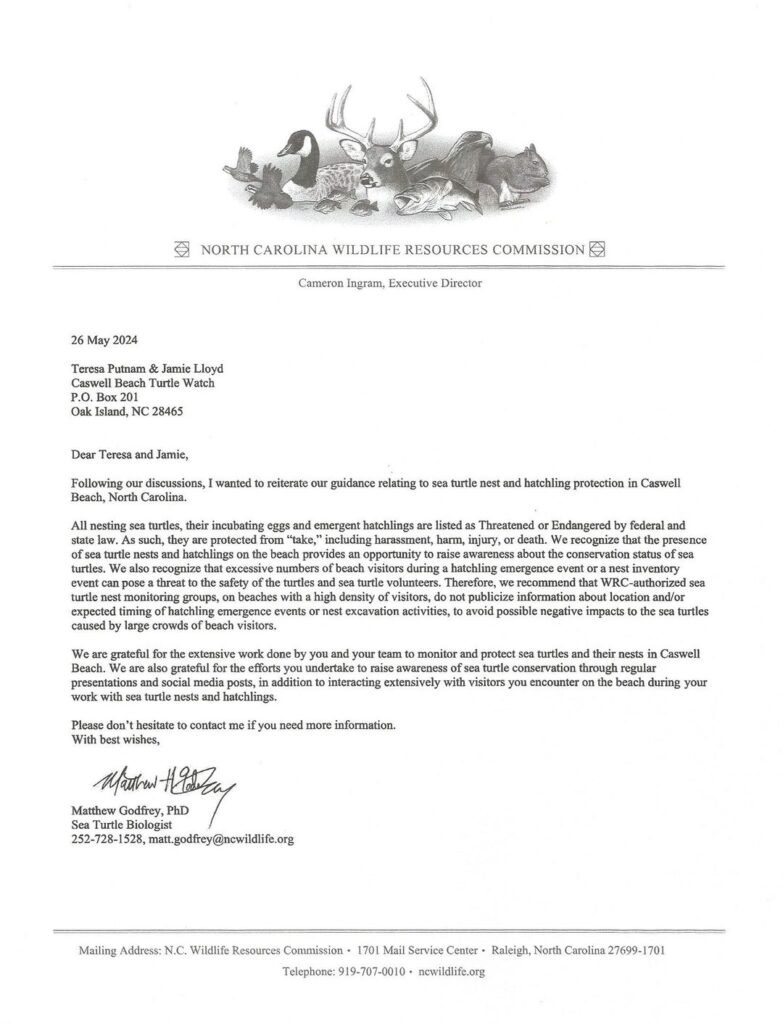Island Life NC recently published a detailed article about all that happens during sea turtle nesting season. It includes a Read More
Category: Turtle Facts (& Fiction)
NCWRC Regulations for Sea Turtle Protection
We recently had some questions about sea turtle programs on our beaches, so we thought we would address them publicly Read More
Leucistic Turtles
The other evening we had a couple of hatchlings that needed a little rest before they went out to sea. Read More
Are Red Lights Better for Sea Turtles?
FACT: Sea turtles DO see red lights. The color and wavelength is not as disturbing to them as a white Read More
Do Flashlights Hurt Sea Turtles?
Flashlights don’t HURT sea turtles. FACT: Flashlights do not physically harm sea turtles. Sea turtles do not see well on land, Read More
New to Caswell Beach Turtle Watch?
Hello Caswell Beach Turtle Friends. As we head into the busy part of turtle season, we wanted to take a Read More
Sea Turtle Embryo Development Pictures
Karen Clark from NCWR presented a training session in Sea Turtle Embryo Devlopment. The following are a few slides that Read More


